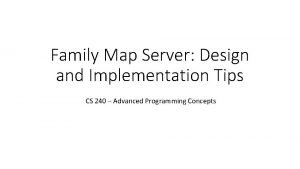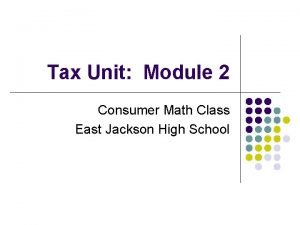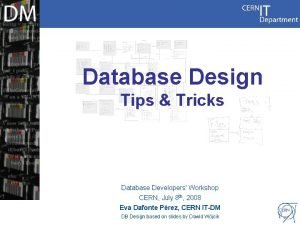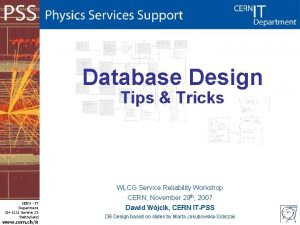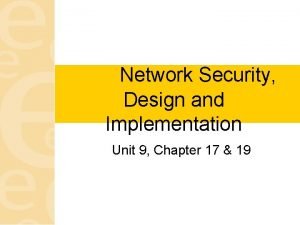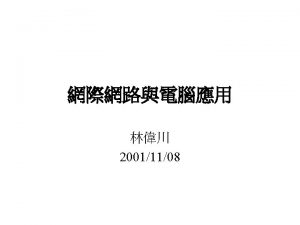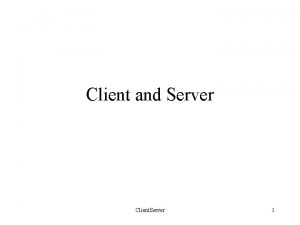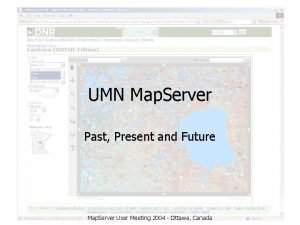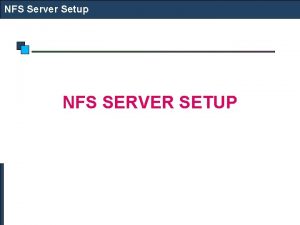Family Map Server Design and Implementation Tips CS








- Slides: 8

Family Map Server: Design and Implementation Tips CS 240 – Advanced Programming Concepts

Recommended FMS Implementation Steps 1. Model Classes (not really anything to test, especially if your IDE generates most of the code) 2. DAO classes and JUnit tests 3. Main server with File Handler for serving the Web API test page • Needed to test the rest 4. JSon Serializer (Object Encoder/Decoder) and Web API (Handler, Service, Request and Response classes) for /clear, /load, and /user/login with JUnit Tests 5. Ancestor generation logic with JUnit Tests 6. The Rest of the Web API with JUnit Tests 2

Json Deserialization • A generic Gson deserialization method that will return a runtime specified data type public static <T> T deserialize(String value, Class<T> return. Type) { return (new Gson()). from. Json(value, return. Type); } • Called by specifying the return type: My. Data. Type value = Json. Serializer. deserialize(json. String, My. Data. Type. class); 3

Generating a Random Character String with Full Control • Put available characters in an array • Upper and lower case letters • Digits • Special characters (be careful not to include any Json syntax characters) • Randomly generate numbers between 0 and array. length import java. util. Random; … Random random = new Random(); … random. next. Int(array. length) • Use the randomly generated numbers to pick characters from the array to be included in the String 4

Generating a Random Character String with UUID import java. util. UUID; public class UUIDGenerator { public static void main(String [] args) { String uuid = UUID. random. UUID(). to. String(); System. out. println(uuid); } } 5

Request Handlers • Use inheritance to avoid duplicate code • Handlers to consider: • Request. Handler • Top-Level parent handler • Code to write a Json response • Other code? ? ? • Authorizing. Request. Handler • Parent for handlers that require authorization • Read the authorization header to get the auth_token. Return a 401 if missing or invalid • Post. Request. Handler • Parent for handlers that handle post requests • Read the request Json and convert to a Java object • Other code? ? ? • Others? ? ? 6

Request Handler Implementation: File Handler • See Http. Handler Examples and Writing a File Handler slides in Web. API slides • For the Family Map Server project, in addition to returning a 404 for “File Not Found”, also return the “/HTML/404. html” document provided in the files for the server project 7

Response Class • Parent class for common response attributes • ‘message’ instance variable and getter/setter • ‘success’ instance variable and getter/setter 8
 Sql server management studio tips and tricks
Sql server management studio tips and tricks Family map server
Family map server Tips earned by a server in a fashionable restaurant
Tips earned by a server in a fashionable restaurant Database design tips and tricks
Database design tips and tricks Database design tips
Database design tips Network security design and implementation
Network security design and implementation Uiecu
Uiecu Cobit 2019 design and implementation exam questions
Cobit 2019 design and implementation exam questions Accessible learning experience design and implementation
Accessible learning experience design and implementation

